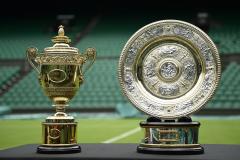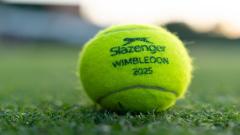French Open Final Betting Tips: Nadal ideal lay-to-back

"Ruud's average is slightly better than Nadal's on both measures..."
10 pts Lay-to-back Rafa Nadal at 1.211/5
There is no reason why Casper Ruud can't win the French Open men's singles final, writes Jack Houghton, but a lay-to-back of Rafael Nadal is the value choice...
This gig requires that I provide an in-depth statistical look at previous head-to-head matches of Grand Slam finalists, identifying value bets in the match's side markets - total games, set betting, number of sets. That sort of thing.
Normally, this is no problem. The spreadsheets exist. Some new numbers need plugging in. Some percentages and odds get produced. I write about them.
For this French Open final, which sees Rafa Nadal (1.211/5) take on Casper Ruud (5.709/2), things are complicated somewhat by the players never having faced each other in a competitive match.
Head-to-head statistics-wise, then, I have nothing.
What I do have, though, are some other statistics that hopefully point us towards a profitable lay-to-back approach.
Statistic 1: Their ratings are near identical
Going into this French Open, I had less than 30 points between Ruud and Nadal on my Elo ratings. Based purely on those numbers, Nadal should be 1.9720/21.
Much like I argued when writing about Alcaraz pre-tournament, though, there is a lot that ratings cannot take account of - most notably here how a player will react to the psychological pressure of a first Grand Slam final - but even factoring in this ratings-uncertainty, it's hard to see why Nadal is such short odds.
Statistic 2: Ruud should win some easy points on serve
Apart from John Isner, Ruud is the best server in the men's game on clay. He has served 131 aces in the last year, compared to Nadal's 14. And his serving prowess isn't just about aces: Ruud wins 74.1% of his first-service points on clay, compared to Nadal's 67.3%
Statistic 3: Ruud gets his returns deeper
When it comes to Nadal's service game, Ruud is likely to make him work harder than an average opponent, as he is one of the deepest returners in the men's game. Using Return Depth Index - a metric introduced by the data wonks at Hidden Game of Tennis - Ruud comes out best of the top ten players in the world.
Nadal's dominance in clay-court rallies often comes from his ability to step inside the baseline when balls are short. This will still happen, of course, but Ruud's returning should mean that Nadal has to work harder for those opportunities.
Statistic 4: Ruud holds his own on crucial second-serve measures
A few years' ago, I did a lot of work to try and figure out the most important metrics when it came to predicting the most likely winners of matches. Using regression analysis, it became apparent that two key measures were the most responsible for making one player a winner over another: percentage of second-serve points won, and percentage of returning second-serve points won.
Good news for Ruud is that - on clay in the last year - his average is slightly better than Nadal's on both measures.
The bad news is the variability in Ruud's percentages. Whereas Nadal reliably punches out figures in the mid 50% range for both metrics, Ruud's numbers are all over the place.
Verdict: It's all about the second serves
And it's on this that the outcome of the match will likely hang. If Ruud is able to get his second serve firing early, and is equally able to profit on Nadal's second serve, there is little reason on form say that he shouldn't win, and at the odds, he is certainly the value.
A Grand Slam final is a new experience for Ruud, though, and whether he will be able to sustain his performance for the duration must remain a doubt.
The advice, then, is a lay of Nadal at his short odds of 1.211/5. There is a decent chance those odds will lengthen during the initial stages of the match, allowing the opportunity to back him back for a guaranteed profit.
I'll be looking for something north of 1.501/2 to do that at, but will judge it depending on how the match is progressing.
Recommended bets
GET £50 IN FREE BETS MULTIPLES WHEN YOU SPEND £10 ON THE BETFAIR SPORTSBOOK
New customers only. Bet £10 on the Betfair Sportsbook at odds of min EVS (2.0) and receive £50 in FREE Bet Builders, Accumulators or Multiples to use on any sport. T&Cs apply.
Prices quoted in copy are correct at time of publication but liable to change.

